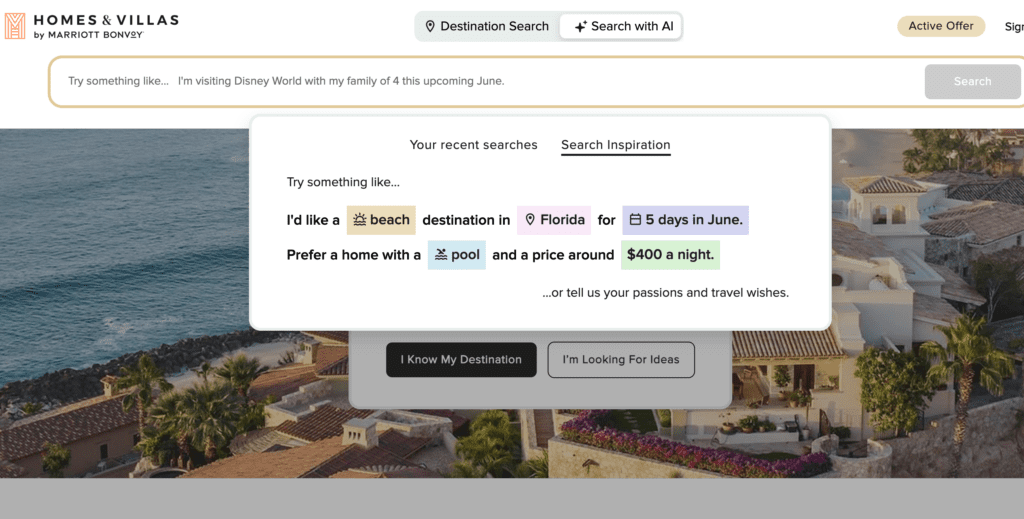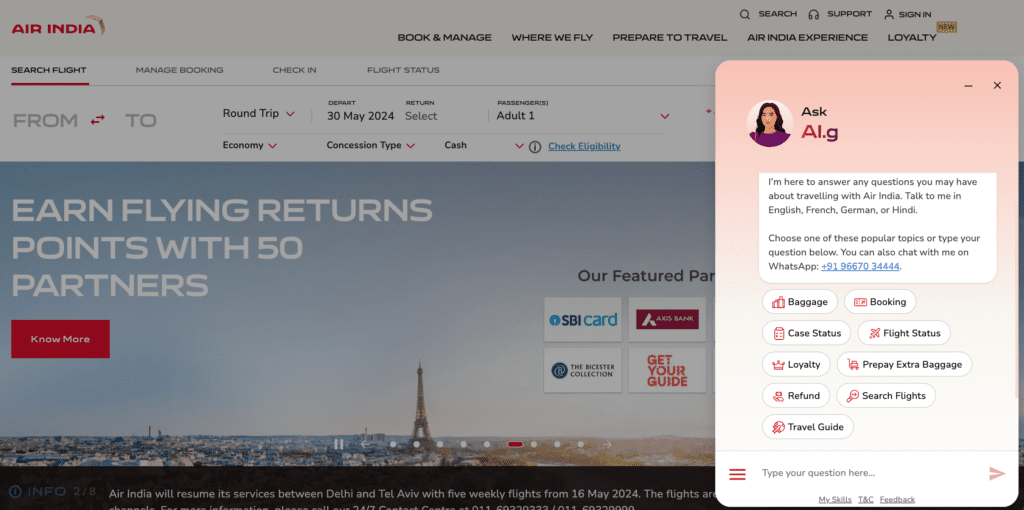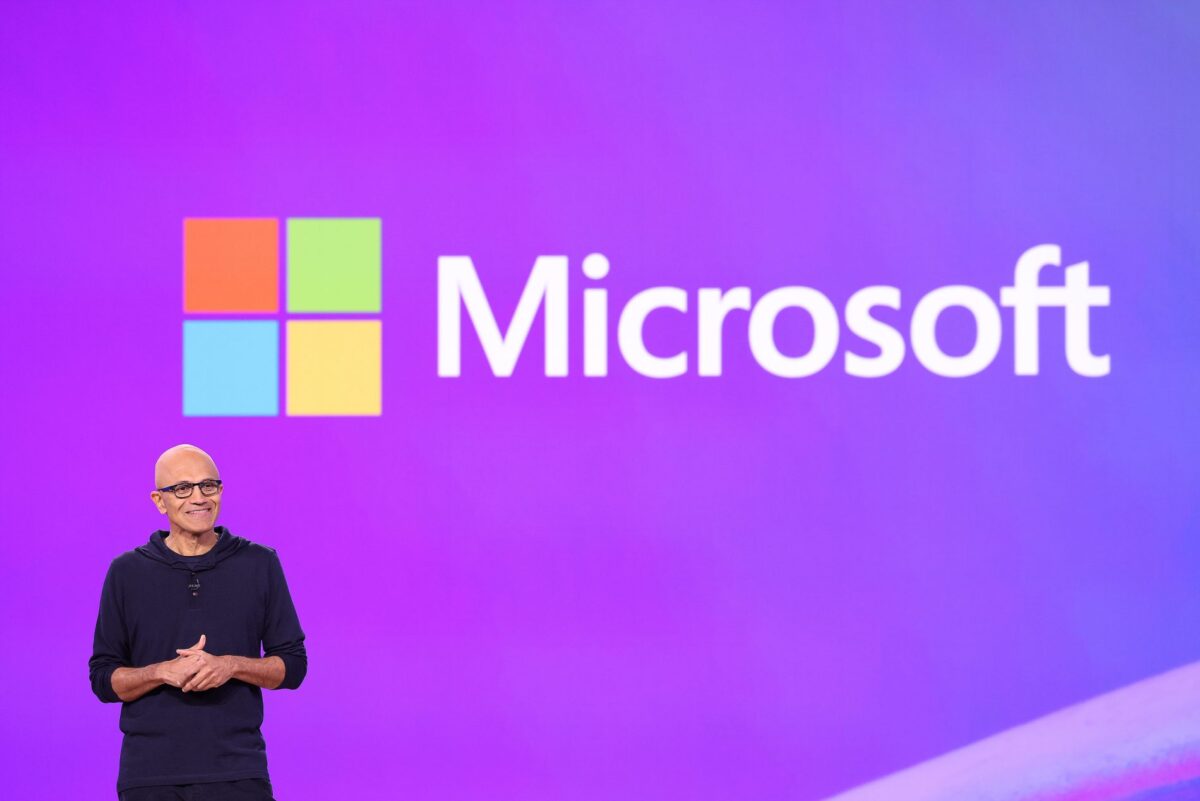Skift Take
— Justin Dawes
Microsoft has invested billions of dollars into OpenAI, making it part owner and giving it early access to the generative AI technology.
That tech, which powers ChatGPT, has been the basis for Microsoft AI initiatives with travel companies like Amadeus.
Shane O’Flaherty, Microsoft’s global director of travel, transportation, and hospitality, will be on stage next week at the Skift Data+AI Summit in New York City discussing Microsoft’s recent collaborations with travel companies.
(See more details here about what to expect at the event.)
OpenAI earlier this month released its latest AI model, GPT-4o. And Microsoft said last week that the model is now generally available through its software building platform, Azure.
Microsoft CEO Satya Nadella showed during a conference last week how a company could deploy a virtual agent, using GPT-4o, that customers can interact with via voice and video. In the example: A customer tells the virtual agent about an upcoming trip and holds up his sandal. The agent recognizes it, says a studier boot would be better for a hiking trip in cold weather, and then suggests an alternative option to be added to the shopping cart.
Below is an outline of some recent Microsoft projects that connect AI and travel.
Amadeus: Airline Retail and Business Travel
Microsoft and Amadeus have been “strategic” partners since 2021. That’s led to the companies working on several projects recently powered by tech from OpenAI.
Amadeus last year revealed Nevio, a system meant to make airline sales more like shopping on Amazon. The company says the system can help airlines more easily sell their own products as well as other travel products like hotels. For the customer, that means a simple app for tracking everything. The first customers: Saudia, Finnair, and British Airways.
Microsoft is piloting a connection with Cytric Easy, the corporate travel booking platform owned by Amadeus, that allows corporate Copilot users to book a business trip using natural language within Teams. Microsoft in December added Cytric Easy to Azure, meaning software developers can integrate the business travel booking capability into their products.
Other projects Amadeus has been piloting with Microsoft include programs for automated airline crew rescheduling and personalized website homepages for passengers.
Amadeus this spring started rolling out Microsoft Copilot to thousands of employees for internal use. The AI assistant connects to all Microsoft Office products — Word, Excel, PowerPoint, Outlook, and Teams — and can transfer information between them. Amadeus employees’ favorite is that the assistant can take notes during meetings and list follow-up points.
Marriott Bonvoy: Homes & Villas Search
Marriott Bonvoy earlier this year released an AI tool meant to help users search for vacation rentals under the Homes & Villas brand. It was crafted using Microsoft Azure’s OpenAI service.
A banner at the top of the brand’s homepage invites the user to try a search with the new AI tool. It enables searches for properties based on general prompts in everyday language, such as: “I want to go on a nature getaway with family-friendly activities in Joshua Tree.”
(See Skift’s test from April.)
Marriott Bonvoy last year said that it had more than 100,000 listings through Homes & Villas, which it says is focused on the “premium and luxury tier of rental homes.”

Air India
Air India last November released a generative AI chatbot on its website, which Microsoft says is the world’s first for an airline.
Air India earlier this year extended chatbot access through a channel on WhatsApp.
The airline says the chatbot, called AI.g, can answer questions on more than 1,300 travel-related topics in four languages: Hindi, English, French, and German. It was built using Microsoft Azure’s OpenAI service.

Air India said in November that the chatbot successfully answered 80% of its 6,000 daily questions, while 15% of queries were transferred to human agents for further assistance.
“After the emergence of Large Language Model-driven Generative AI capabilities, we are increasingly seeing a definitive shift in guest preferences to use chat interactions to get the information and support they need quickly and directly as compared to browsing several web pages,” Satya Ramaswamy, chief digital and technology officer for Air India, said in a statement at that time.
The chatbot can help with bookings, questions about baggage policies, flight status checks, and more.
It can also provide suggestions about landmarks and restaurants to visit, based on the user’s selected destination. With the click of a button, the chatbot also creates a PDF of an itinerary that automatically downloads to the user’s device. Here is the PDF of the itinerary it suggested for five days in Delhi.
Photo Credit: Microsoft CEO Satya Nadella shared last week that Azure users now have access to GPT-4o.


